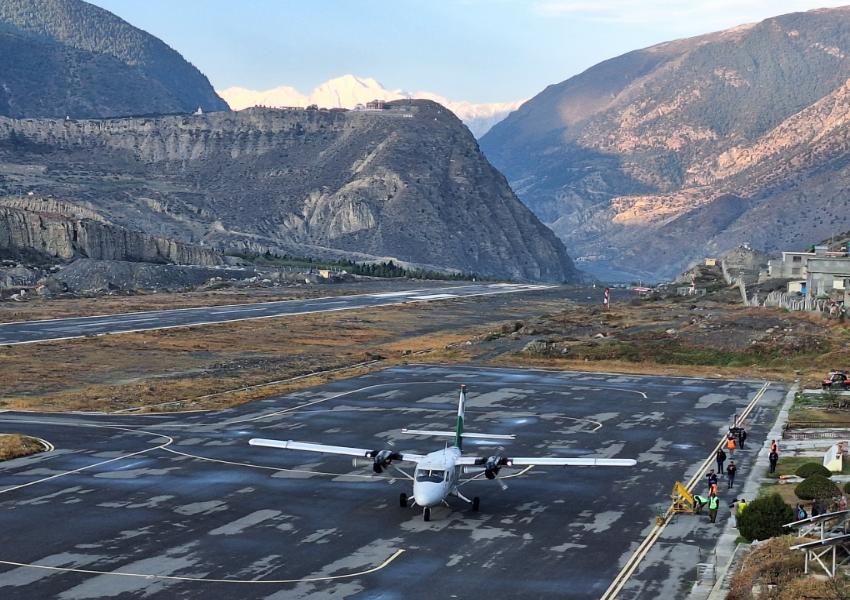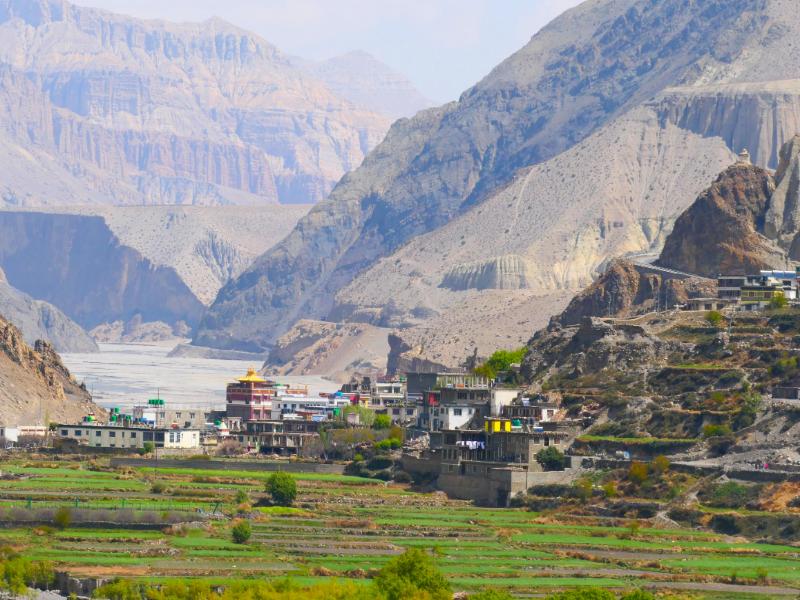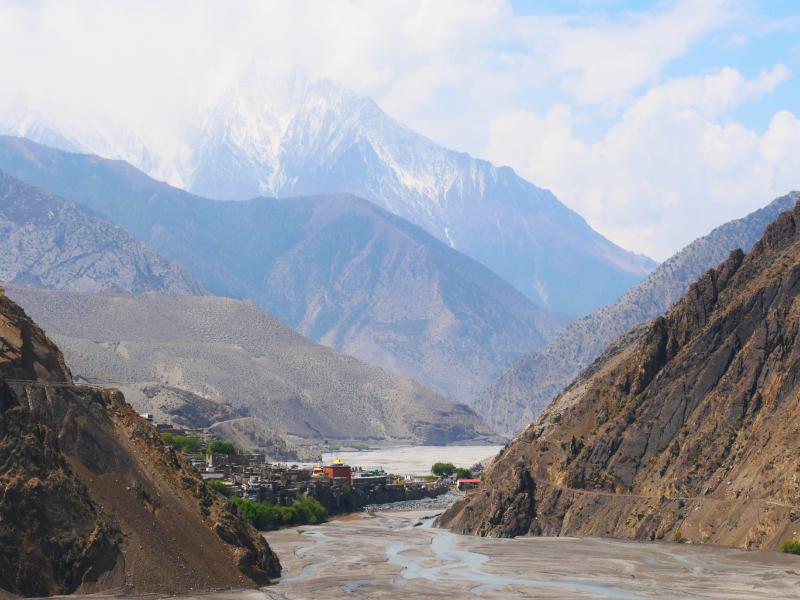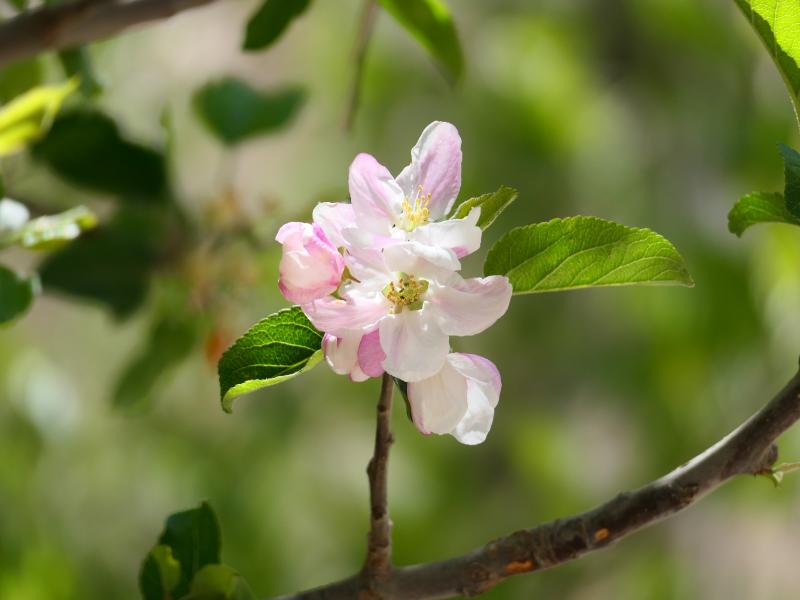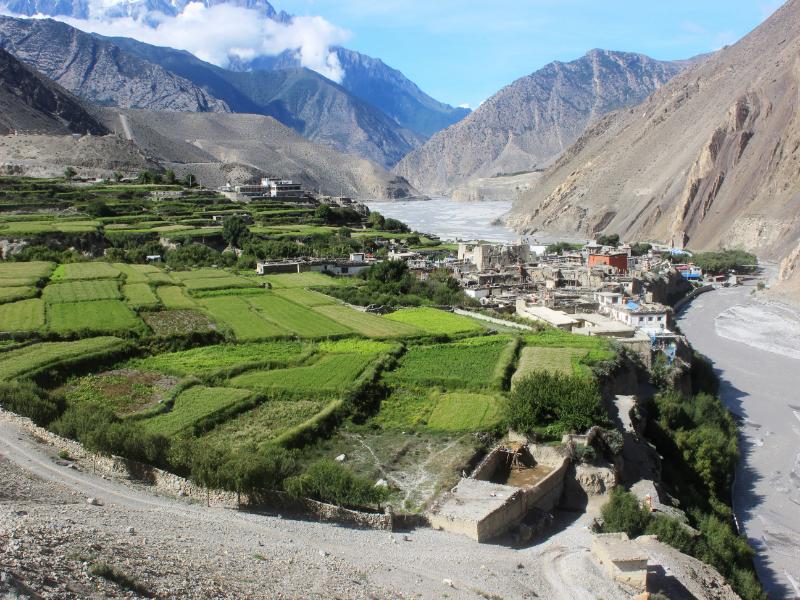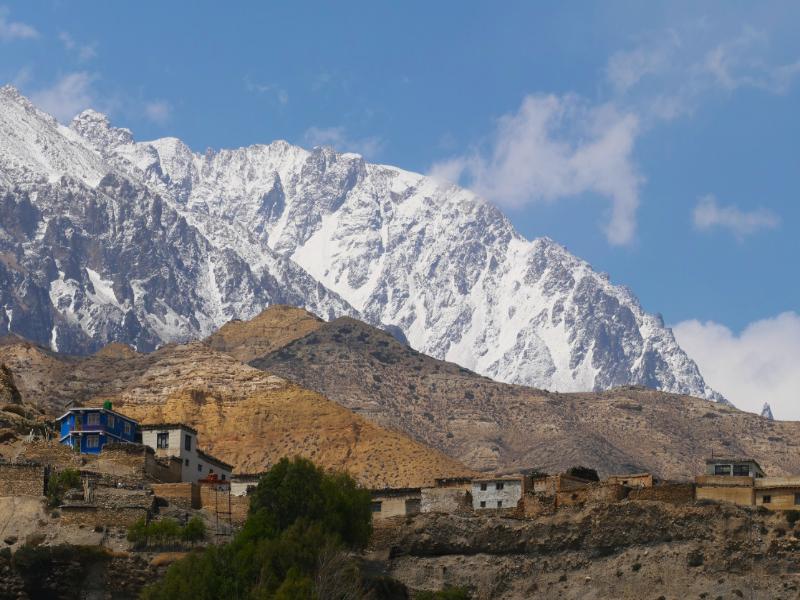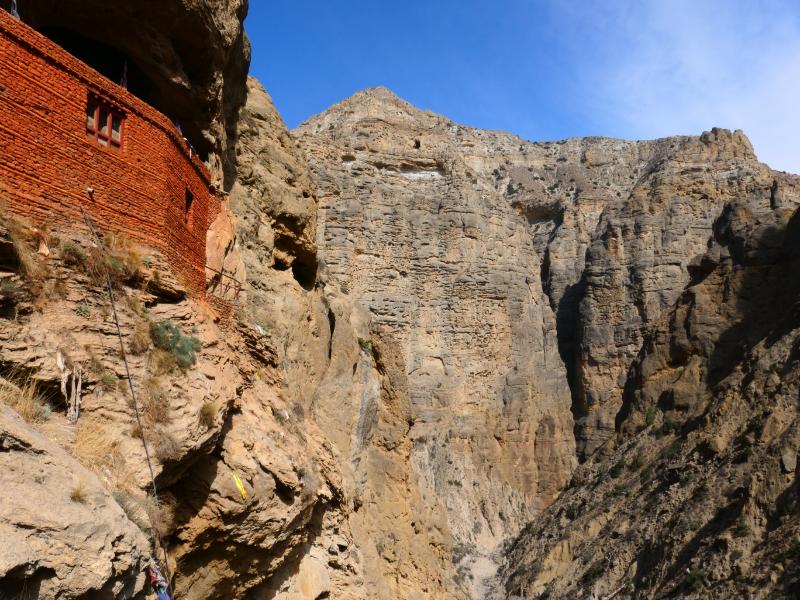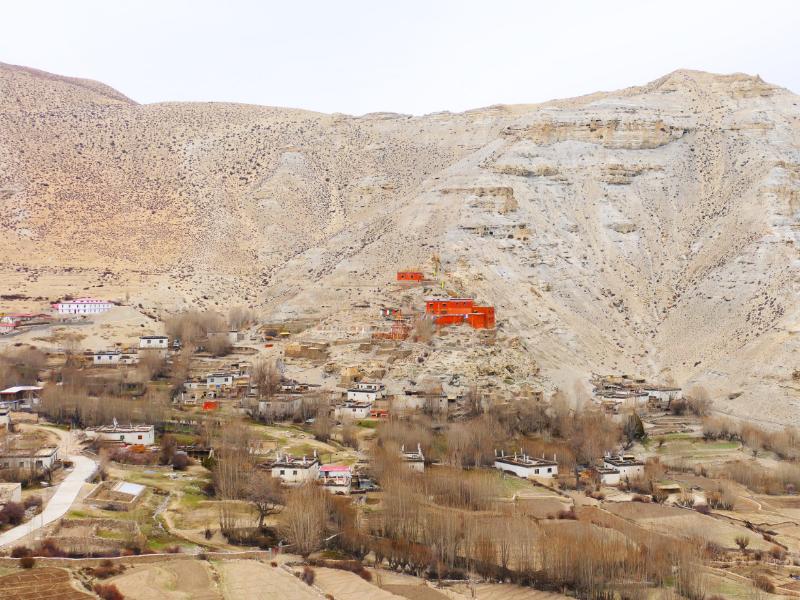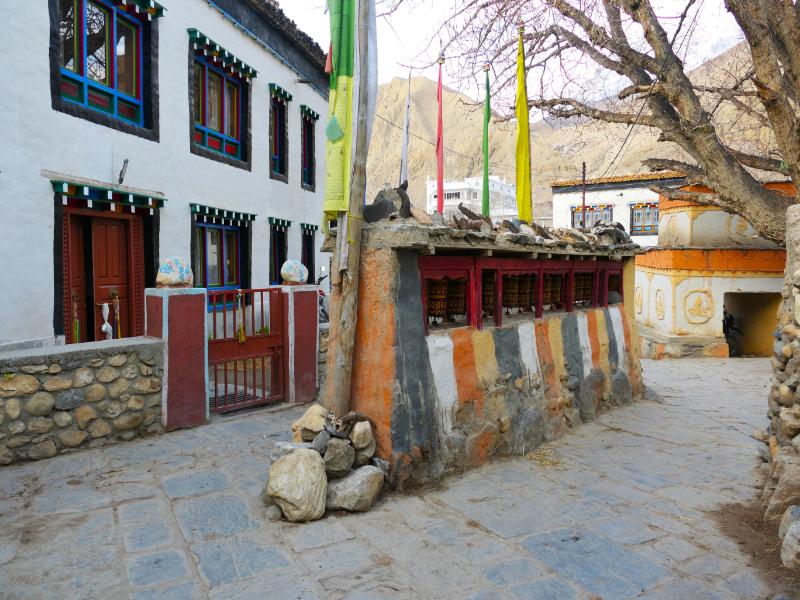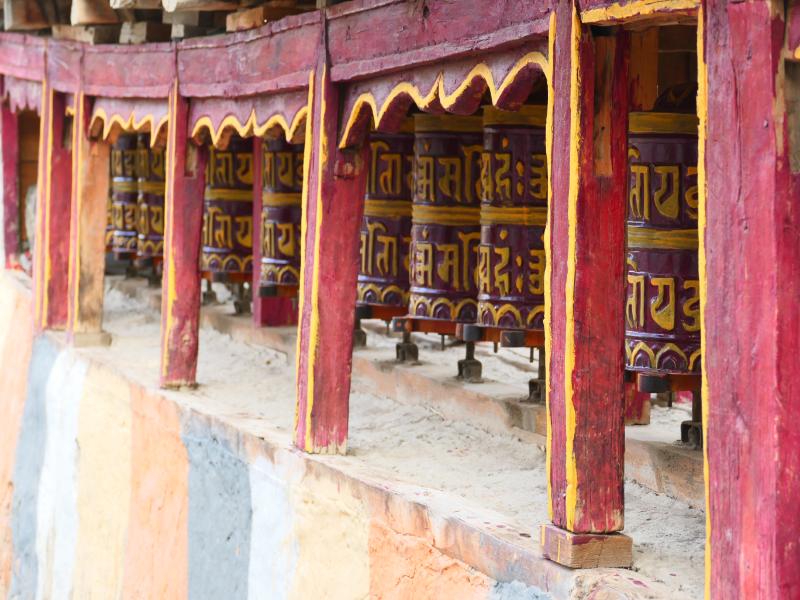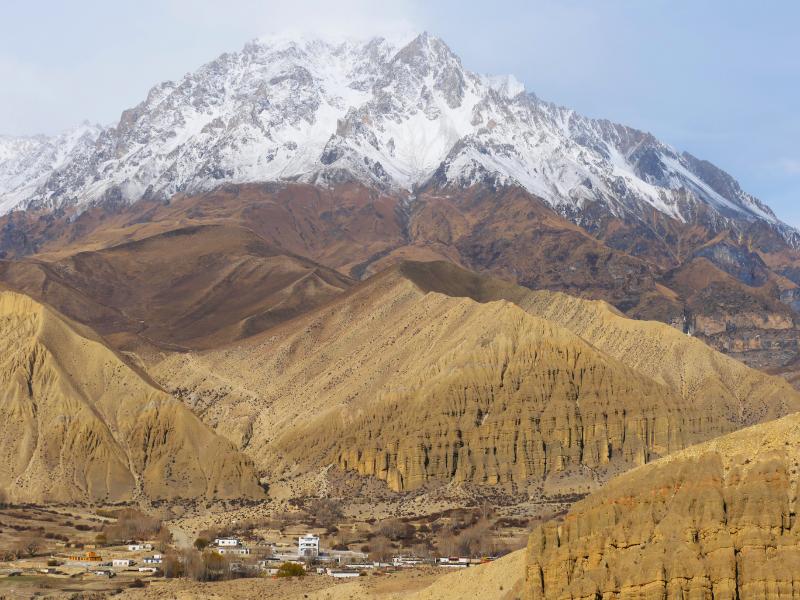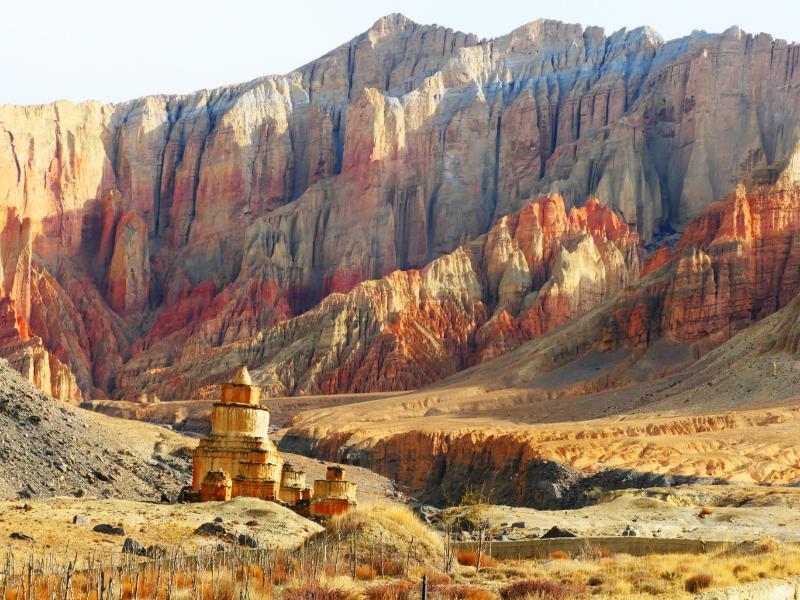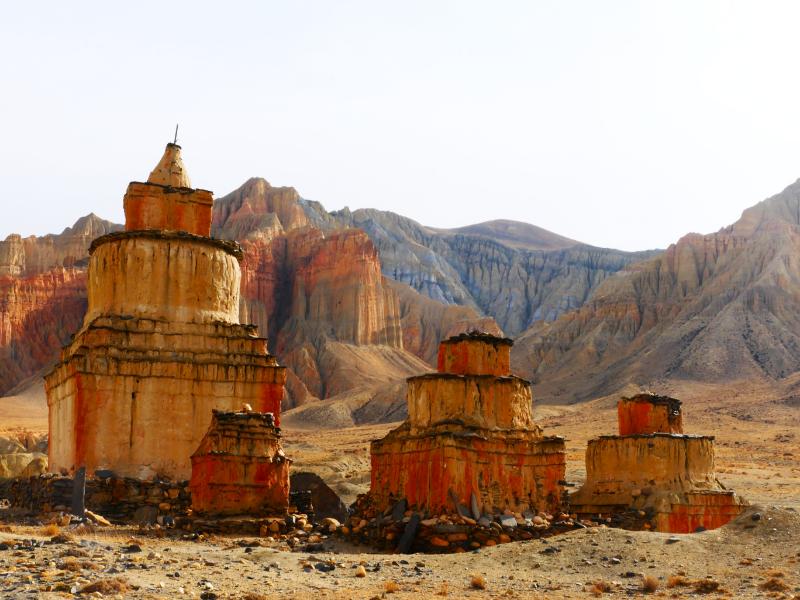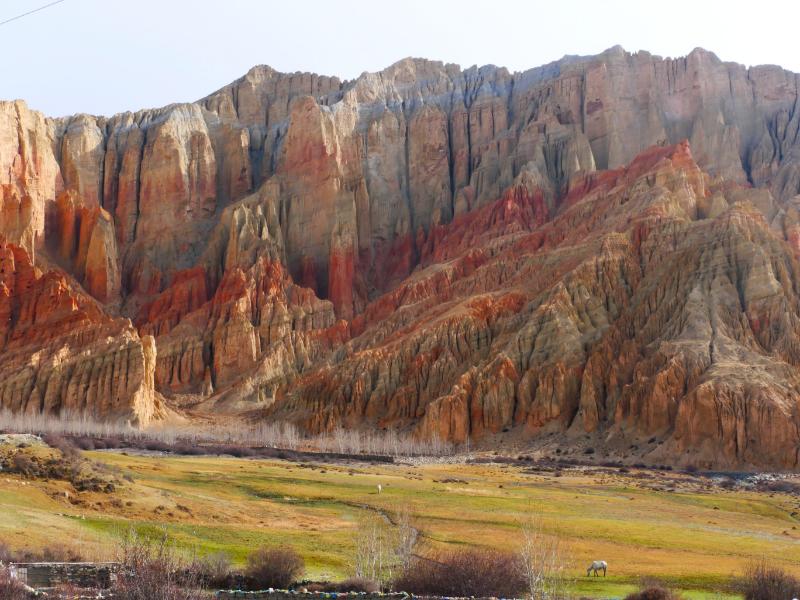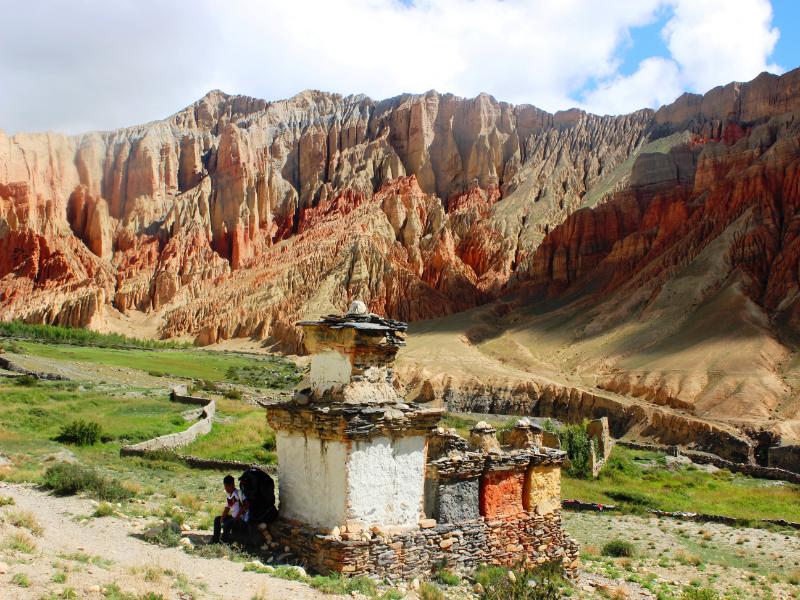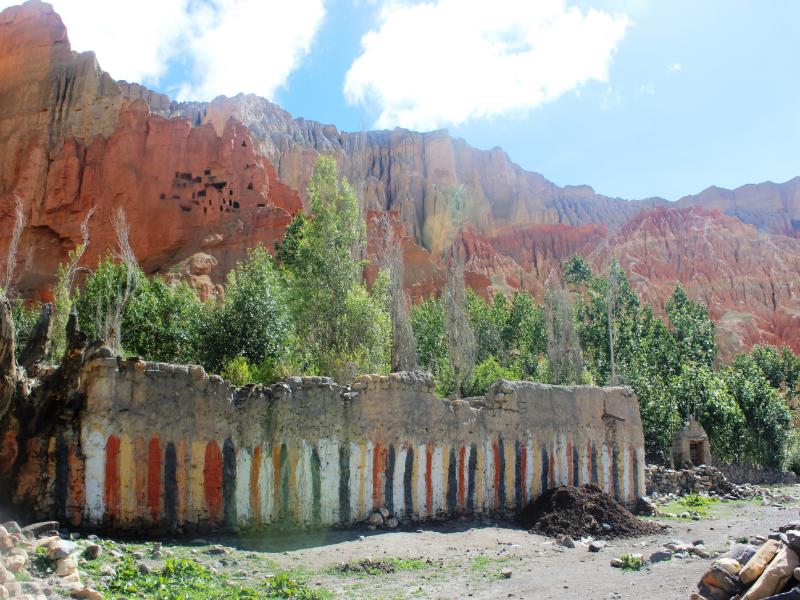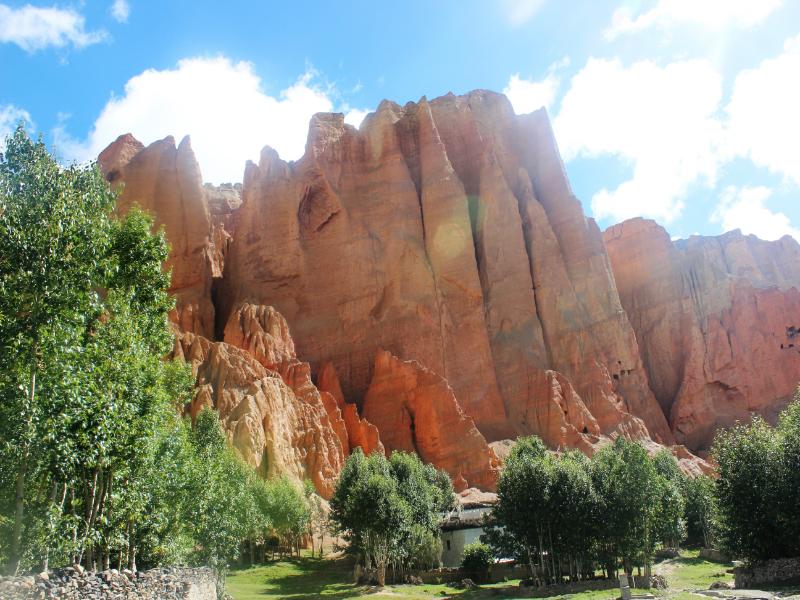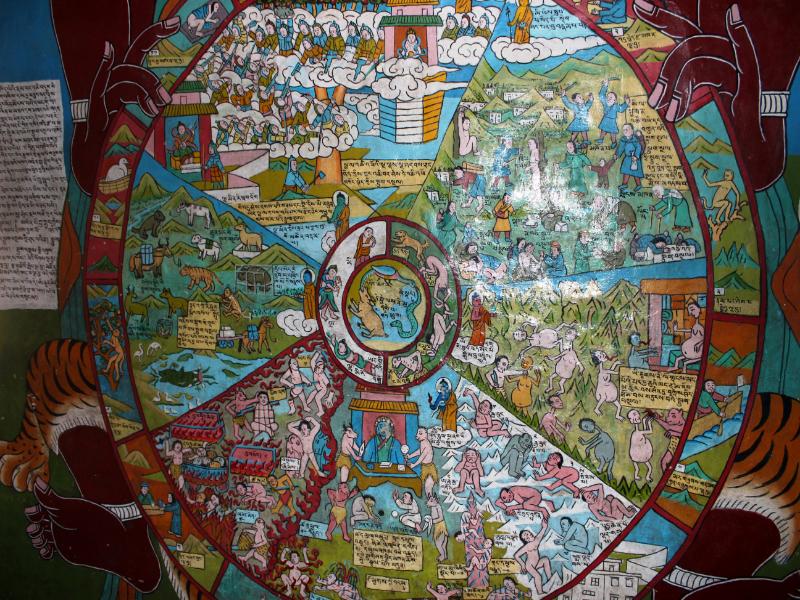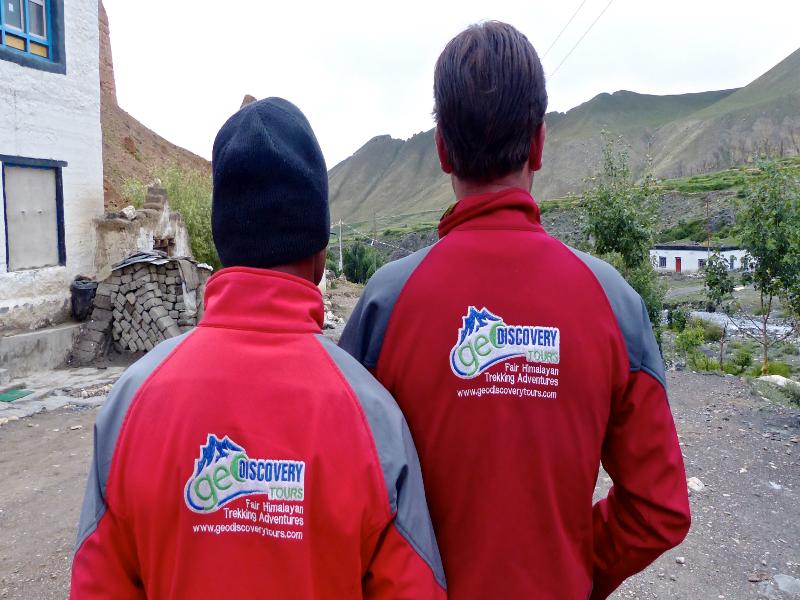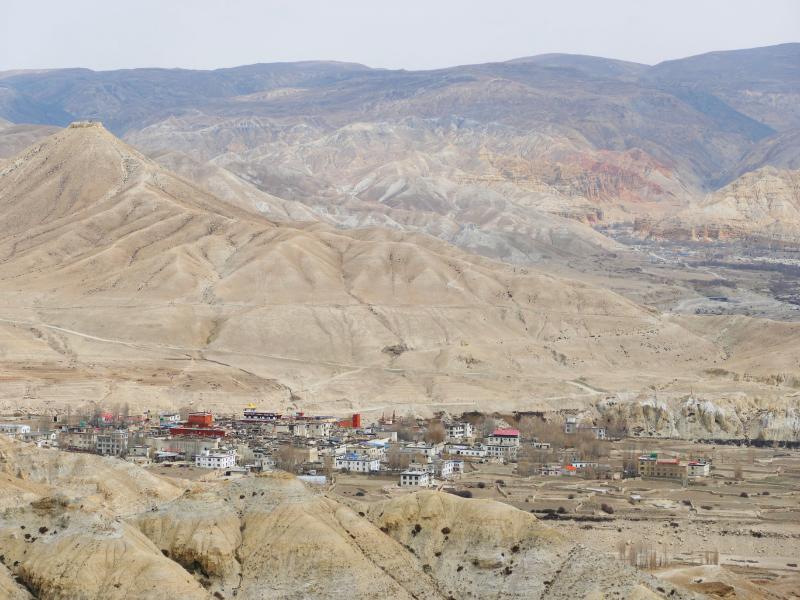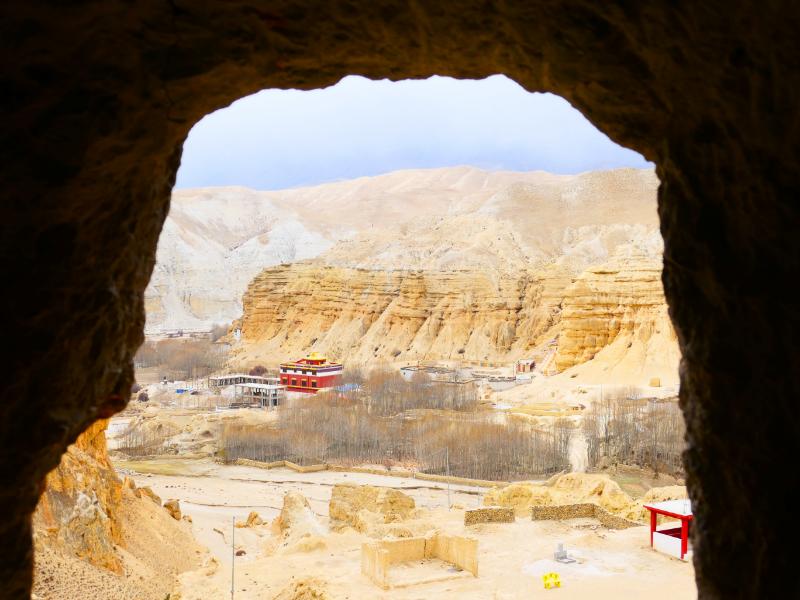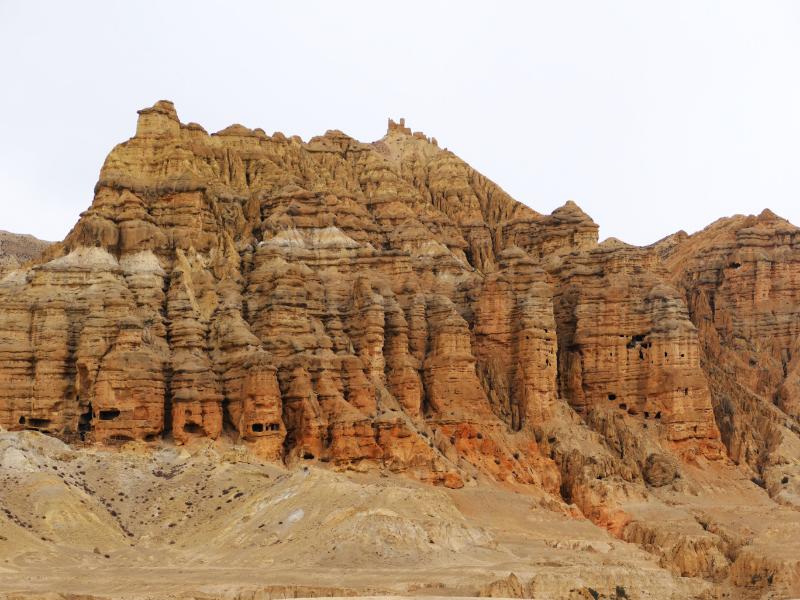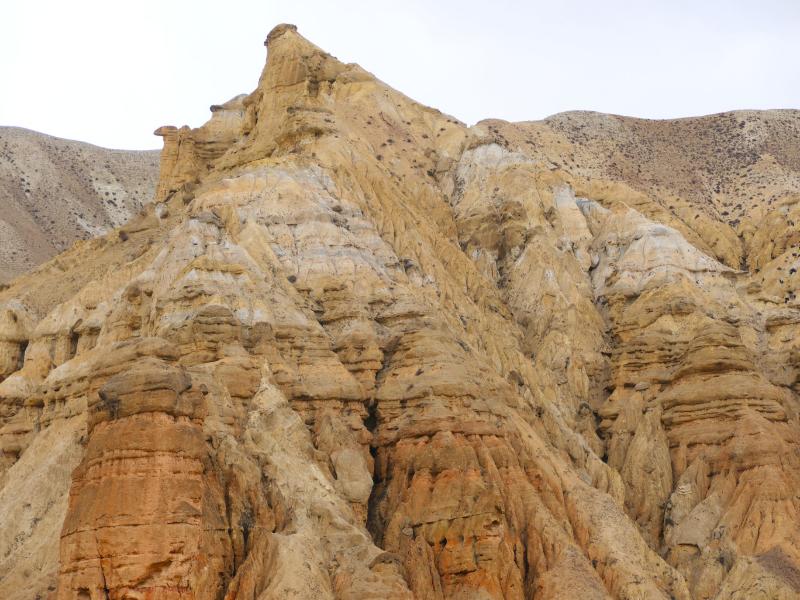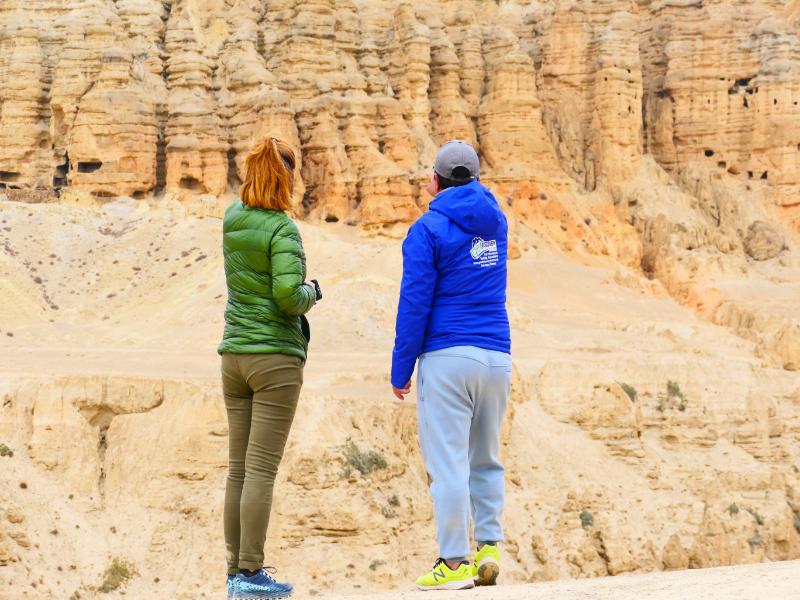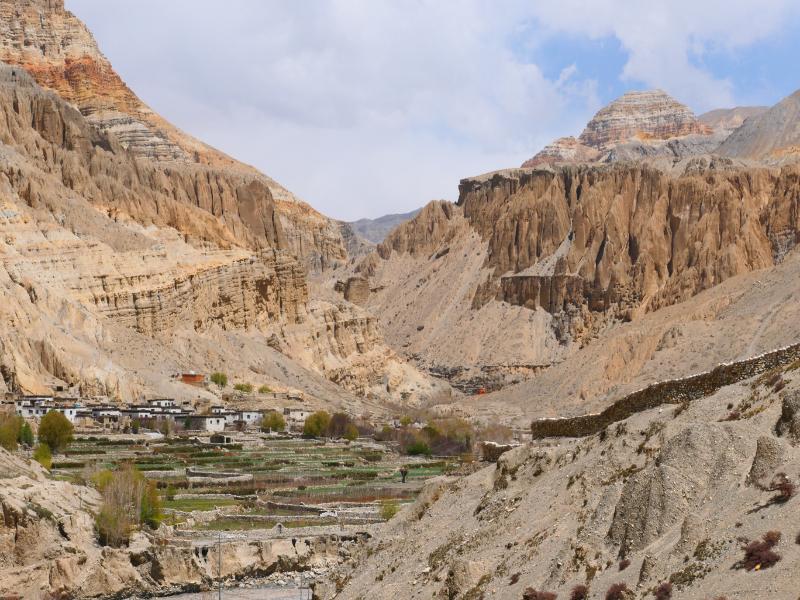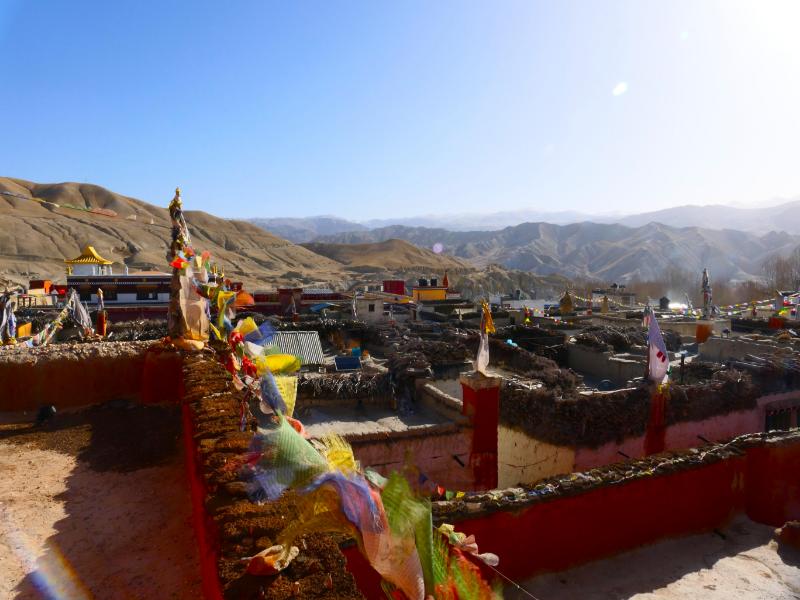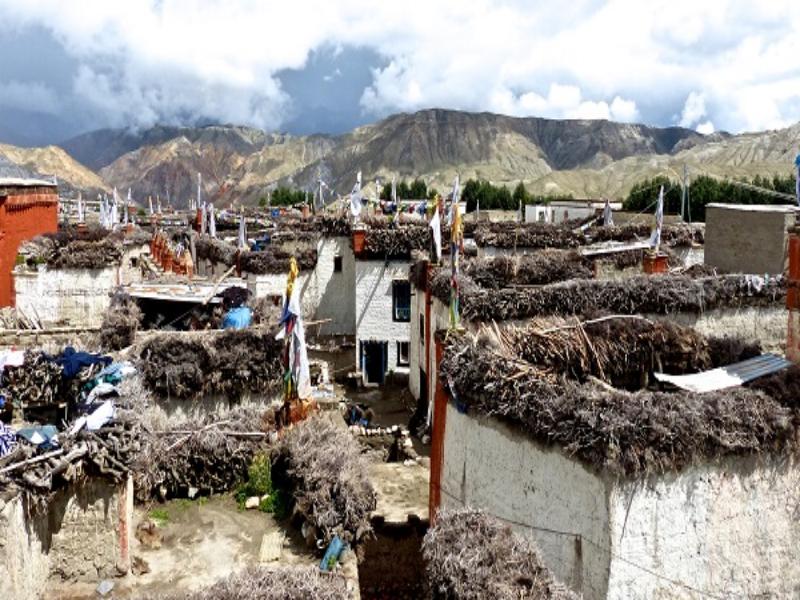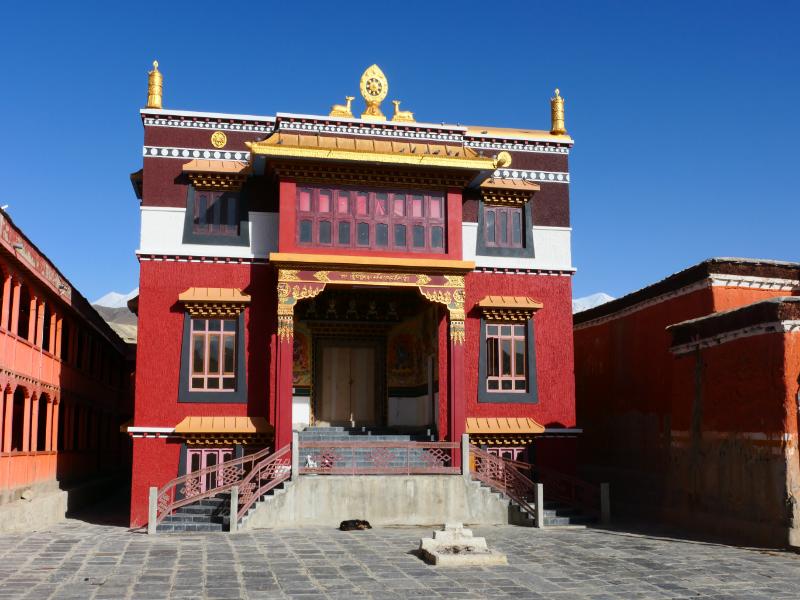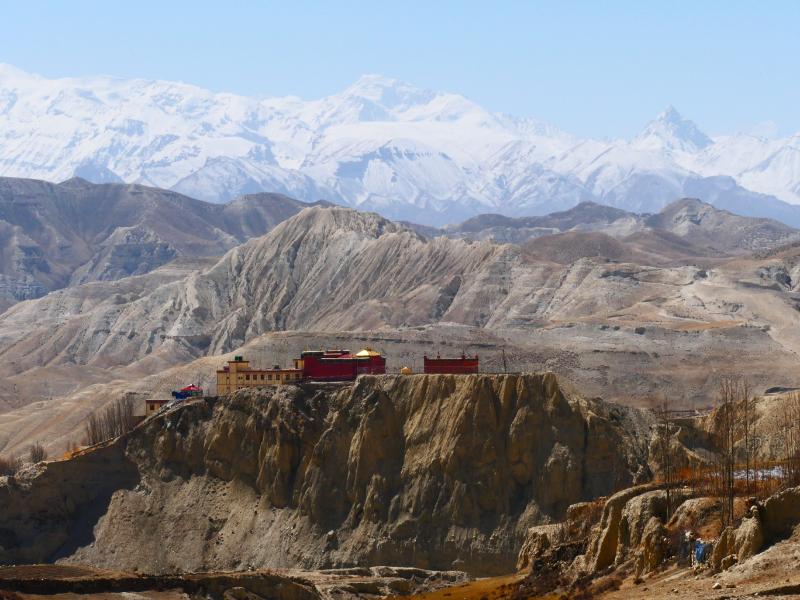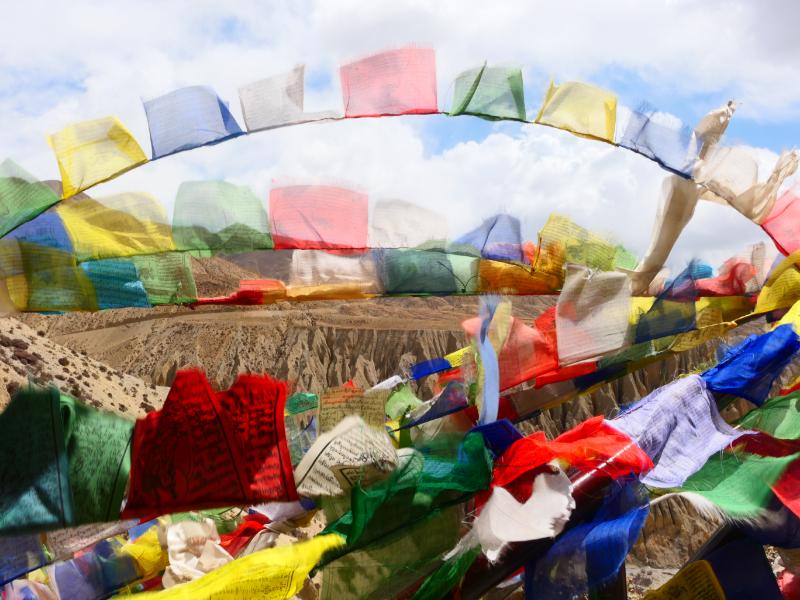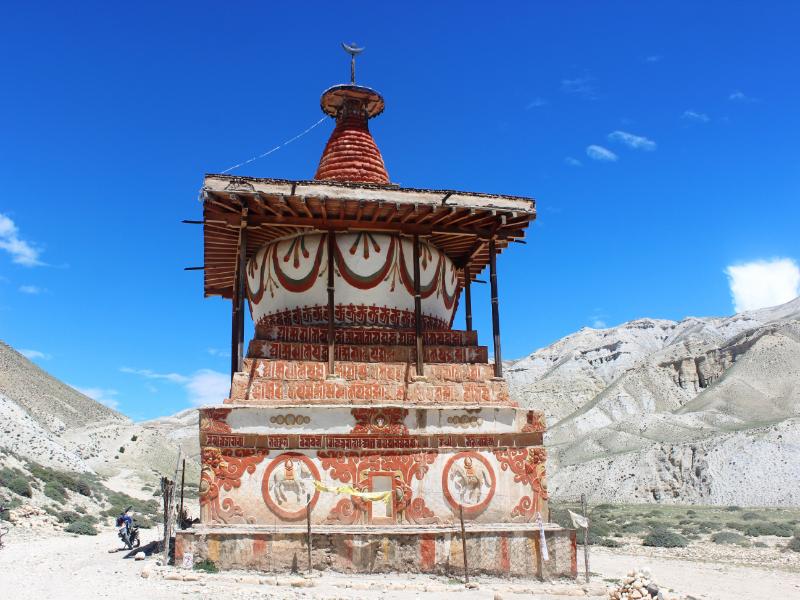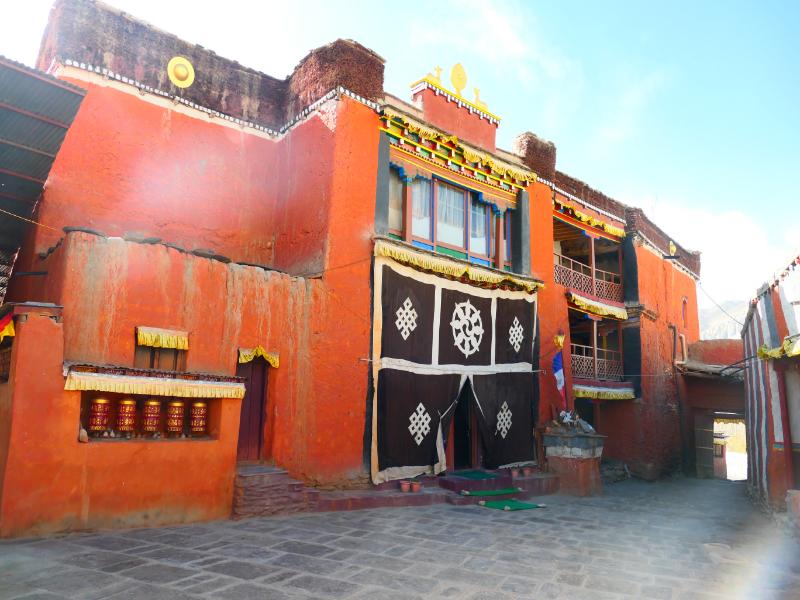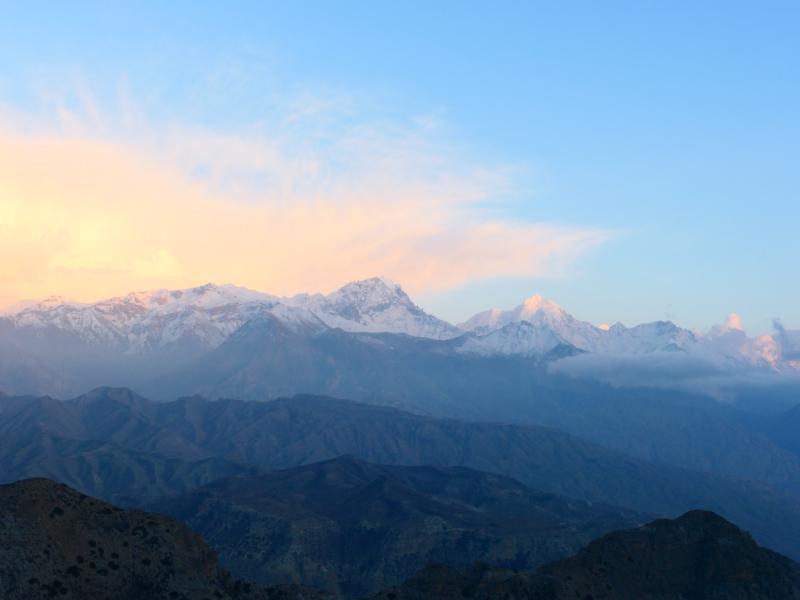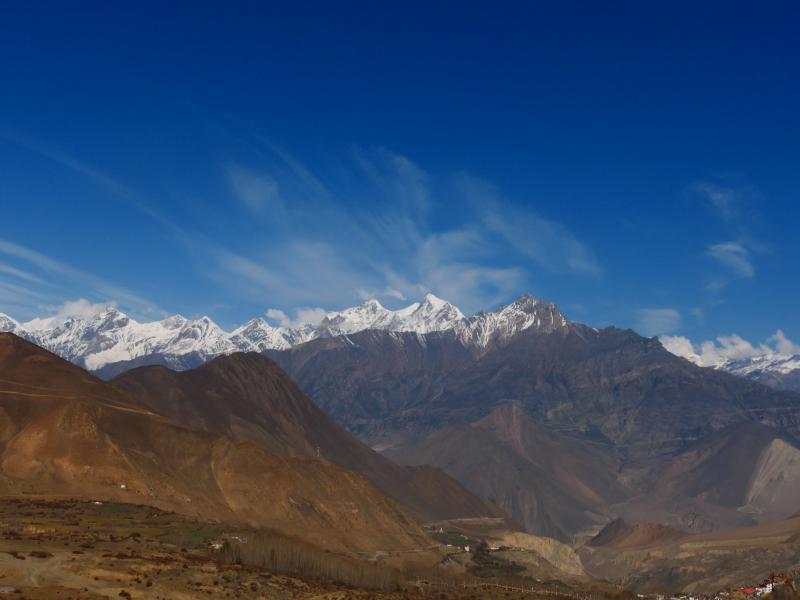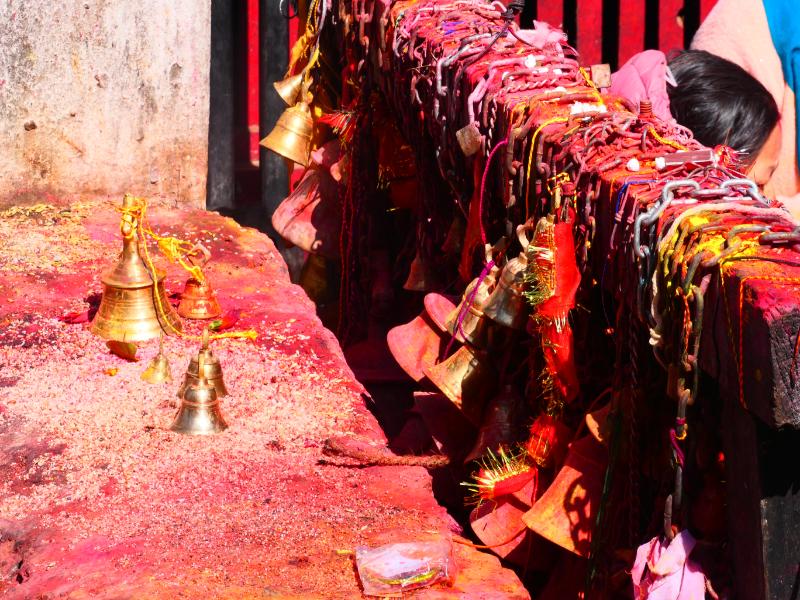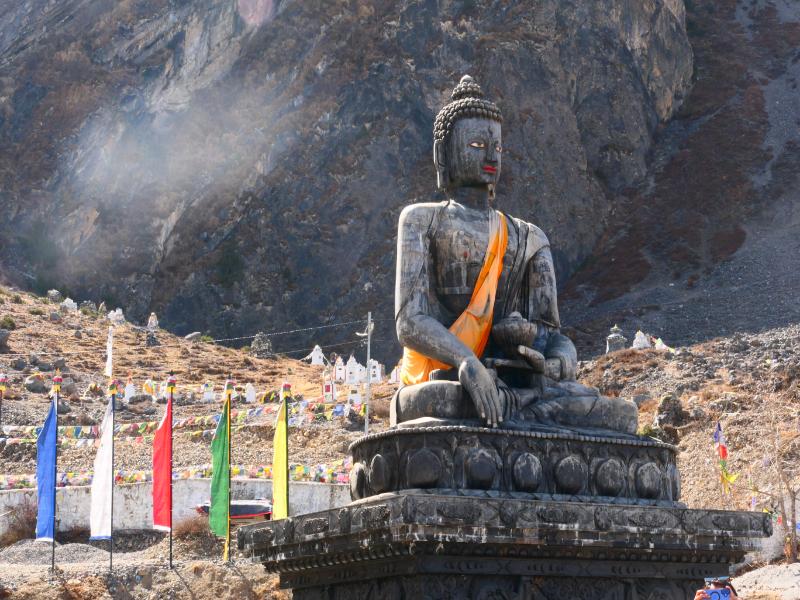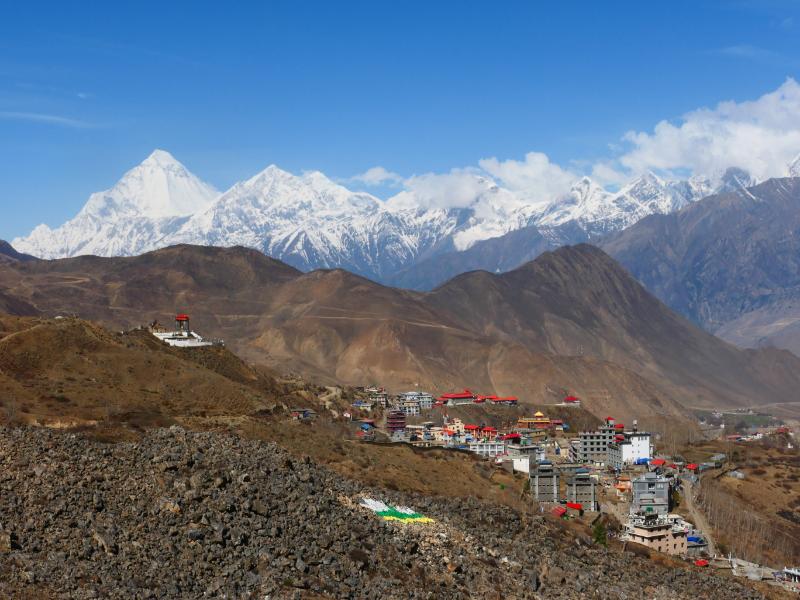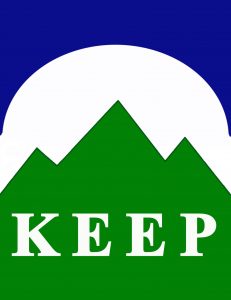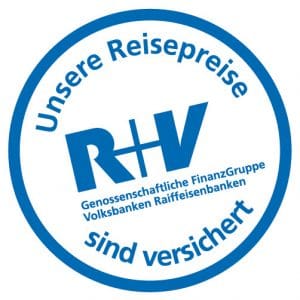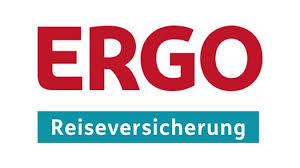Upper Mustang Trek – the journey of colours and inspiration
- Description
- Gallery
- Trip itenerary
- Trip dates, prices and services
- Important travel information
- Request Book
In the lee of the Annapurna, a path begins that leads not only through landscapes but deep into the heart of an ancient kingdom. Upper Mustang, once the closed-off Lo, gradually opens up with every step — for those willing to listen to the silence.
The journey starts among golden stupas and prayer flags in Kathmandu, continues to Pokhara where the Himalayas reflect in the lake. From there, the trail ascends through the vast Kali Gandaki valley, past Kagbeni, where sand, wind, and legends meet.
The days are marked by vastness — red canyons, wind-shaped passes, and dust-colored villages. From Syangboche through Dhakmar to Lo Manthang — each place holds stories. Monasteries like Ghar Gompa and Luri Gompa are like time capsules from an era beyond clocks. Their walls tell in colors what books never could.
The air grows thinner, the spirit expands. On high paths between 3,000 and 4,200 meters, not only the horizon changes but also your own pace. You move slowly — through rocky gateways, over passes, past chortens, caves, and wind-eroded walls. Places like Tangge, Chhusang, or Muktinath are not just stops along the way but inner stations on a pilgrimage.
Upper Mustang offers space — for inner reflection, for awe-filled gazes, for what is often overlooked. The silence is not empty; it is full. At the end of this 160-kilometer trek, nothing is the same — not because of the altitude, but because of the depth of this journey.
Day 1: Arrival in Kathmandu (1,400 m) – Briefing & Welcome Dinner
You will be warmly welcomed at the airport and transferred to your hotel. With your first breath in Kathmandu, the scent of incense, the bustling streets, and the golden light of the afternoon sun blend into a sensory beginning to your journey. After checking in, there is time to settle in and relax. Later, your guide will be introduced, provide an overview of the trip, and assist with reviewing your gear. In the evening, you are invited to a welcome dinner at a traditional restaurant—a first taste of Nepal’s warmth and rich flavors. Overnight at Kathmandu Guest House, (D).
Day 2: Exploring Kathmandu & Trek Preparation
Today we dive deep into the spiritual world of the Kathmandu Valley. In the morning, we climb up to Swayambhunath, also known as the Monkey Temple. Perched high above the valley, it offers a wide view over Kathmandu’s sprawling rooftops. Among golden stupas, ancient Bodhi trees, and the watchful eyes of Buddha, you can feel the timeless presence of this sacred place. Afterwards, we visit Nepal’s most sacred Hindu temple: Pashupatinath. On the banks of the Bagmati River, we quietly observe farewell rituals. The cremation fires burn with dignity—a place where life and death meet, upheld by centuries-old traditions, prayers, and respect for impermanence. A humbling experience. To end the day, we circumambulate the majestic Boudhanath Stupa, whose white dome rises to the sky and whose aura of silence captivates us. Surrounded by prayer flags, butter lamps, and murmuring mantras, we experience the meditative depth of Tibetan Buddhism. In the late afternoon, we focus on practical preparations for our trekking adventure. Overnight at Kathmandu Guest House, (B).
Day 3: Flight to Pokhara (827 m) – Himalayan Reflection & Free Time by the Lake
A short flight takes us to Pokhara, where the majestic Himalayas reflect on the calm waters of Phewa Lake. The day offers time to relax, stroll along the shore, or enjoy a coffee with views of snow-capped peaks. The lake sparkles like a jewel nestled between mountains—a peaceful start to the upcoming adventure. Overnight at Mt. Kailash Resort, (B).
Day 4: Flight to Jomsom (2,743 m) & Trek to Kagbeni (2,810 m) – approx. 11 km, 2–3 hrs
A spectacular flight over the world’s deepest gorge brings us to Jomsom, the gateway to mystical Mustang. The trail winds through the vast, wind-swept Kali Gandaki Valley to medieval Kagbeni. Black pebbles, white prayer walls, and red dust form the colorful mosaic of this mysterious landscape. Rugged mountains frame the valley like venerable guardians. Overnight at a guesthouse with private bathroom (B|L|D).
Day 5: Drive to Chele (3,070 m) & Trek to Syangboche (3,624 m) – approx. 11 km, 5–6 hrs
After a jeep transfer, the “real” Upper Mustang trek begins. We climb over the first high passes – Taklam La (3,624 m) and Dajori La (3,735 m). The landscape becomes more barren, with ochre-hued cliffs bathing in magical light. Secret caves like Chungsi whisper tales from long ago. The wind carries stories known only to the mountains. Overnight at a guesthouse with private bathroom (B|L|D).
Day 6: Trek to Dhakmar (3,820 m) – approx. 15–16 km, 6–7 hrs
We cross the dry high plateaus of the former Mustang kingdom. Passing ancient stupas, we cross Yamda La and Nyi La passes, which offer breathtaking views. In Ghami, we are greeted by Nepal’s longest mani wall—a colorful symbol of spiritual power. Dhakmar welcomes us with its glowing red rocks, like tongues of flame licking the earth. Overnight at a guesthouse with private bathroom (B|L|D).
Day 7: Trek to Lo Manthang (3,840 m) via Ghar Gompa – approx. 14 km, 7 hrs
The day begins with a visit to the ancient Ghar Gompa, a place of deep meditation where Guru Rinpoche is said to have practiced. We then ascend to the highest point of the trek, Chogo La Pass (4,230 m), with stunning valley views. The descent leads us to the heart of Mustang kingdom—Lo Manthang, the old fortress city with white mud houses, prayer flags, and vibrant history. Overnight at a guesthouse with private bathroom (B|L|D).
Day 8: Explore Lo Manthang (3,840 m) & Chhoser Valley – approx. 6–8 km, 3–4 hrs
In the morning, we drive to the remote Chhoser Valley. Here lie the Jhong Caves, a five-story cave complex with over a hundred rooms—once a home, retreat, and sanctuary. Cliffside monasteries like Nyphu Gompa resemble bird nests perched on rock. A silence over the valley speaks louder than words. In the afternoon, we explore Lo Manthang, a town seemingly frozen in time. Behind the whitewashed mud walls stretches a maze of narrow alleys, low houses, and centuries-old monasteries. Once the Mustang kingdom’s capital, the spirit of ancient kings still lingers in quiet courtyards. Monasteries like Thubchen, Jampa, and Chode Gompa hold centuries-old murals, masks, and prayer scrolls—testimonies of lived spirituality in the Himalayas’ shelter. Overnight at a guesthouse with private bathroom (B|L|D).
Day 9: Trek to Yara (3,838 m) – approx. 14–15 km, 5–6 hrs
We leave the royal city and trek through lonely, wind-shaped landscapes. Deep gorges and bizarre rock formations accompany our path. After a rest in the village of Dhi, we descend to the river and climb again to remote Yara, where houses cling protectively to the rocks. Overnight at a guesthouse with private bathroom (B|L|D).
Day 10: Excursion to Luri Gompa (3,838 m) & Return – approx. 6–8 km, 3–4 hrs
A short walk takes us to Luri Gompa, a cave monastery with ancient tantric murals and spiritual symbols. The place radiates special power. We also visit the Tashi Kabum cave with its painted mandalas before returning to Yara to relax. Overnight at a guesthouse with private bathroom (B|L|D).
Day 11: Trek to Tangge (3,240 m) – approx. 17 km, 6–7 hrs
The trail leads through lonely, dusty desert landscapes. Yaks and goats are rare encounters here. On the horizon, snow-capped mountains glitter. Tangge appears almost like a mirage, with its white mud houses and chortens, nestled in rubble. Overnight in a simple guesthouse (B|L|D).
Day 12: Trek to Chhusang (3,067 m) via Paha Pass (4,210 m) – approx. 22 km, 9–10 hrs
The longest and most challenging day of the trip! The steep climb to Paha Pass demands endurance, but the vastness and silence of this high mountain landscape reward us with unforgettable views. The descent leads into the green valley of Chhusang, where we sense a return to civilization. Overnight at a guesthouse with private bathroom (B|L|D).
Day 13: Trek to Muktinath (3,800 m) via Gyu La Pass (4,077 m) – approx. 22 km, 8 hrs
One last high pass awaits: Gyu La (4,077 m). From its summit, the view stretches far over the rugged highlands we leave behind—a backdrop of wind, stone, and silence. The descent brings us to legendary Muktinath—one of Nepal’s holiest sites where Hinduism and Buddhism uniquely intertwine. The temple complex lies in a barren, sun-soaked plateau, threaded by the clear waters of sacred springs. For Hindus, Muktinath is one of the 108 Vishnu shrines, a place of liberation (Mukti). The 108 water spouts—Muktidhara—symbolize purity: devotees stand under the icy water to cleanse past karma. Eternal flames burn behind the temple, fueled by underground gas mysteriously rising from the sacred water. Buddhists also pilgrimage here. For them, Jwala Mai—the goddess of flame—is a powerful symbol of undying life force. It is said Guru Rinpoche meditated here and blessed the place. As we walk through the sanctuary, the scent of juniper, murmurs of pilgrims, and light of butter lamps blend into a feeling of deep devotion. To the west, the white peaks of Dhaulagiri (8,167 m) and Tukuche Peak rise majestically, and on clear days, the Nilgiri range is visible—a scene that stills heart and mind, like a window to the sky. Overnight at a guesthouse with private bathroom (B|L|D).
Day 14: Return to Pokhara (827 m) – approx. 7 hrs
The journey nears its end. By jeep, we drive back through apple orchards, past the hot springs of Tatopani, and the charming village of Marpha. Back in Pokhara, comfort and a sense of home await. Overnight at Mt. Kailash Resort, (B).
Day 15: Flight to Kathmandu (1,400 m) & Visit Bhaktapur
A short flight returns us to the capital. Afterwards, we visit Bhaktapur, a city rich in history and art: cobblestone streets, intricate wood carvings, and centuries-old temples that seem to freeze time. Overnight at Bhaktapur Heritage House, (B).
Day 16: Day Trip to Patan and Return to Kathmandu
Today we focus on the artistic side of the Kathmandu Valley. In Patan, the oldest of the three royal cities, we discover impressive temples, intricately decorated palaces, and the unique architecture of Durbar Square. Wandering through lively alleys, we uncover traditional craftsmanship and feel the cultural richness that has shaped Patan for centuries. Afterwards, we drive back to Kathmandu. Overnight at Kathmandu Guest House, (B).
Day 17: Farewell & Departure
One last time, soak in the special atmosphere of Kathmandu—the vibrant streets, diverse impressions, and warmth of its people. With a heart full of memories and a soul recharged with new energy, we begin our journey home, (B).
We reserve the right to change the program due to special events, force majeure or weather reasons.
F = Breakfast | M = Lunch | A = Dinner
Trip Start Dates:
German guided tour
English guided tour
-
28. August 2025 -
13. September 20252.990 € Request non-bindingBook bindingly
-
03. September 2025 -
19. September 20252.990 € Request non-bindingBook bindingly
-
18. September 2025 -
04. October 20252.990 € Request non-bindingBook bindingly
-
23. May 2026 -
08. June 20262.990 € Request non-bindingBook bindingly
-
06. June 2026 -
22. June 20262.990 € Request non-bindingBook bindingly
-
27. June 2026 -
13. July 20262.990 € Request non-bindingBook bindingly
-
11. July 2026 -
27. July 20262.990 € Request non-bindingBook bindingly
-
29. August 2026 -
14. September 20262.990 € Request non-bindingBook bindingly
-
05. September 2026 -
21. September 20262.990 € Request non-bindingBook bindingly
-
19. September 2026 -
05. October 20262.990 € Request non-bindingBook bindingly
This trekking tour can also be booked for individual travelers (one person alone) at an additional cost or at the same price for a group at dates other than shown here.
Duration: 17 days
Costs: € 2.990 per person
Group size: min. 2 Persons (all the tour dates are guaranteed with a minimum group size of only two persons)
€ 290 for single room/ tent supplement
What’s included:
- Airport transfers in Nepal
- All relevant surface transfer (with private vehicles)
- All hotel accommodation with breakfast
- All meals on trek (B,L,D)
- All internal flights (with Tara Air, Yeti Air, Summit Air, Sita Air or Buddha Air), inclusive Airport Taxes and 15kg free luggage
- Sightseeing with entrance fees, guide and vehicle
- Permit, National Park Entrance/Conservation Fees
- Guide and porters
- 12 kg free luggage on trekking tours, carried by porter
- Quality service and trek equipment
- Oxymeter
Not Included:
- International flights
- Additional tours and meals that are not mentioned
- Beverages
- Personal bills
- Visas
- Excess baggage charge (beyond 15 Kg each)
- Insurance (for cancellation, accident, health, emergency evacuation and loss, theft of or damage to baggage and personal effects)
- Tips
Visa
Your visa can be issued on arrival at a counter at Kathmandu airport. Visa costs on arriving in Kathmandu amount to US $ 50 (stay of up to 30 days) and US $ 125 (stay of up to 90 days).
The fees can also be paid in euros, which are converted by the bank at the airport in accordance with the dollar exchange rate. Two passport size photographs must be provided for the visa. At the time of the trip your passport must be valid for at least a further six months and have at least one blank page.
These visa and passport regulations apply to EU countries, Switzerland and the USA. Other nationals should check with the relevant consular authorities.
Insurance
Travel health insurance (with recovery costs) is essential for your own safety and a precondition for participation in our trips. In the event of an accident in the mountains which requires a helicopter rescue, the helicopter will not take off before the responsibility for the cost is clarified.
The conclusion of travel cancellation insurance is highly recommended. In the case of bargain price flights in particular, changes or cancellations generally can’t be made free of charge. In Nepal complications with the weather or with your health could make it necessary to break off your journey.
We have requested ERGO (Reiseversicherung) to create various service packages for you. You can book travel health insurance at https://www.reiseversicherung.de.
Please note: ERGO insurance can be booked by residents of Germany and Austria. Those living in other countries are requested to book their travel insurance through an insurance provider in their own country.
It should be noted that geoDiscovery Tours advises its customers to book their travel insurance via ERGO as a recommendation only, and accepts no responsibility for the contractual content between the customer and the travel insurance provider. Customers can book their travel insurance via ERGO or another provider at their own discretion.
The hotels and lodges booked by us
In Kathmandu and Pokhara the hotels we book are good and correspond to medium-level Western standards. Sanitary facilities are clean and functional; the hotel cuisine is adapted to Western eating habits and the food is safe to enjoy. There may sometimes be power cuts, or no hot water may be available for a while. The hotel staff is generally very friendly and looks after the welfare of guests. The hotels booked by us are as follows:
Kathmandu: Hotel Tibet/Manaslu ***+
Pokhara: Mount Kailash Resort, Lake side retreat ***
Palpa/Tansen: Hotel Srinagar **
Lumbini: Hotel New Crystal ***
Chitwan: Jungle Villa Resort
Nagarkot: Nagarkot Farmhouse
During the trek and in the interior of the country conditions are very varied, and travelers must sometimes expect basic sanitation facilities. For standard treks and tours you will stay overnight in typical “lodges” (teahouses). These usually offer very small single rooms or double rooms (some with no running water and no private shower / toilet).
In general, during the trekking tour you can select what you wish to eat from the menu. However, at altitudes of 4,000 meters it can happen that on some routes the choice of food is not very extensive. Typical Nepalese cuisine is mostly vegetarian, but very tasty, filling and wholesome. Travelers need to be adaptable, however.
Flying in Nepal
The domestic flights booked by us are with Tara Air, Summit Air, Sita Air or Buddha Air.
Tour program
The travel program for all of our recommended tours is carefully planned. It can happen, however, that roads are closed without advance notice or are impassable, that there are waiting times of several hours because of traffic congestion or fuel shortages and that specific tourist attractions are closed for various reasons. Other restrictions such as flight delays or even cancellations due to bad weather, strikes, the health of participants or unfavorable conditions while trekking may also make the implementation of the travel program more difficult or at worst make it impossible. However, our local guides are prepared for such situations and will make every effort to achieve every aspect of the program to your satisfaction. As a result the inconvenience can normally be kept to a reasonable level. Nevertheless, it must be pointed out at this juncture that for the above reasons program changes are possible at any time and cannot be influenced by the organizers. The resulting costs are borne by the traveler. We ask for your understanding.
Trip Details
- Duration: 17 days
- Holiday Type: Lodge Trek
- Best trekking period: May/Jun/Jul/Aug/Sep
- Difficulty: Moderate
- Max Altitude: Mui La 4.200m
- Group size: Min 2 persons (all the tour dates are guaranteed with a minimum group size of only two persons)
- Tour guide: English speaking, trained Nepalese mountain guide
-
Difficulty:

-
Fitness:

- Price: 2.990,00 €
-
Single room supplement:
290,00 €
(only for hotel accommodation, for lodge overnight stays during the trek, especially during the high season, single accommodation is not available)

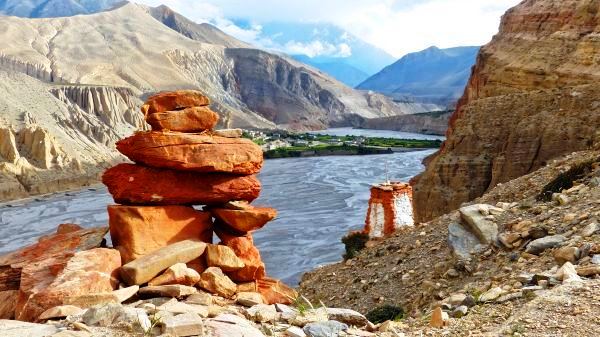
 Nepal
Nepal 
